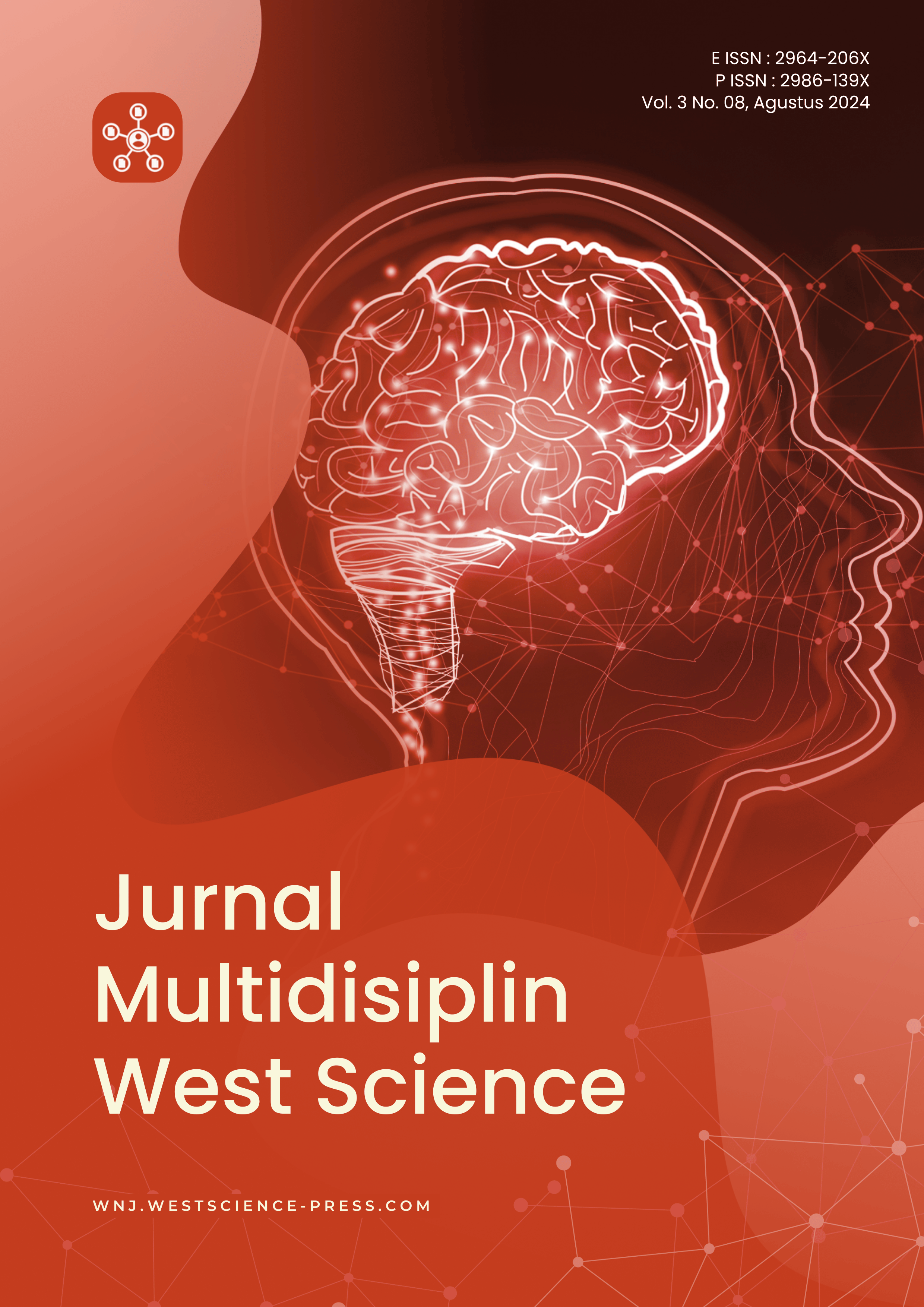Analisis Bibliometrik tentang Pemanfaatan Limbah Organik untuk Energi Terbarukan
DOI:
https://doi.org/10.58812/jmws.v3i08.1568Kata Kunci:
Energi Terbarukan, Limbah Organik, Konversi Energi, Biogas, Biofuel, Analisis BibliometrikAbstrak
Pemanfaatan limbah organik untuk energi terbarukan telah menjadi fokus intensif dalam penelitian keberlanjutan, dengan tujuan mengurangi penggunaan bahan bakar fosil dan mengelola limbah secara efektif. Analisis ini menyelidiki berbagai teknologi konversi energi—seperti biodigesti anaerobik dan gasifikasi—untuk mengubah limbah organik menjadi sumber energi yang berharga seperti biogas dan biofuel. Dengan menggunakan data dari studi terkini dan visualisasi dari VOSviewer, hasil penelitian menunjukkan bahwa teknologi ini tidak hanya mengurangi emisi gas rumah kaca tetapi juga mendukung pengembangan ekonomi lokal melalui penciptaan lapangan kerja dan pengembangan infrastruktur yang berkelanjutan. Selain itu, analisis ini juga menyoroti pentingnya kemitraan antar sektor dan kebijakan pemerintah dalam memfasilitasi adopsi teknologi energi terbarukan dari limbah. Kesimpulan dari studi ini menegaskan bahwa limbah organik, jika dikelola dengan teknologi yang tepat, dapat menyediakan solusi energi yang tidak hanya mendukung tujuan ekonomi tetapi juga tujuan ekologi global.
Referensi
Brennan, L., & Owende, P. (2010). Biofuels from microalgae—a review of technologies for production, processing, and extractions of biofuels and co-products. Renewable and Sustainable Energy Reviews, 14(2), 557–577.
Cayetano, R. D. A., Kim, G.-B., Park, J., Yang, Y.-H., Jeon, B.-H., Jang, M., & Kim, S.-H. (2022). Biofilm formation as a method of improved treatment during anaerobic digestion of organic matter for biogas recovery. Bioresource Technology, 344, 126309.
Deublein, D., & Steinhauser, A. (2011). Biogas from waste and renewable resources: an introduction. John Wiley & Sons.
Gomes, M. G., de Oliveira Paranhos, A. G., Camargos, A. B., Baêta, B. E. L., Baffi, M. A., Gurgel, L. V. A., & Pasquini, D. (2022). Pretreatment of sugarcane bagasse with dilute citric acid and enzymatic hydrolysis: Use of black liquor and solid fraction for biogas production. Renewable Energy, 191, 428–438.
Juś, K., Ścigaj, M., Gwiazdowska, D., Marchwińska, K., & Studenna, W. (2024). Innovative Fermented Beverages Based on Bread Waste—Fermentation Parameters and Antibacterial Properties. Applied Sciences, 14(12), 5036.
Kapdan, I. K., & Kargi, F. (2006). Bio-hydrogen production from waste materials. Enzyme and Microbial Technology, 38(5), 569–582.
Kurniawan, M. L. A. (2022). The Application of Green Economy in the Framework of the 2025 Garbage Clean Bantul Movement (Bantul Bersama). Asian Journal of Healthcare Analytics, 1(2), 65–70.
Maegaard, K., Garcia-Robledo, E., Kofoed, M. V. W., Agneessens, L. M., de Jonge, N., Nielsen, J. L., Ottosen, L. D. M., Nielsen, L. P., & Revsbech, N. P. (2019). Biogas upgrading with hydrogenotrophic methanogenic biofilms. Bioresource Technology, 287, 121422.
McKendry, P. (2002). Energy production from biomass (part 2): conversion technologies. Bioresource Technology, 83(1), 47–54.
Naik, S. N., Goud, V. V, Rout, P. K., & Dalai, A. K. (2010). Production of first and second generation biofuels: a comprehensive review. Renewable and Sustainable Energy Reviews, 14(2), 578–597.
Nigam, P. S., & Singh, A. (2011). Production of liquid biofuels from renewable resources. Progress in Energy and Combustion Science, 37(1), 52–68.
Pant, D., Van Bogaert, G., Diels, L., & Vanbroekhoven, K. (2010). A review of the substrates used in microbial fuel cells (MFCs) for sustainable energy production. Bioresource Technology, 101(6), 1533–1543.
Panwar, N. L., Kaushik, S. C., & Kothari, S. (2011). Role of renewable energy sources in environmental protection: A review. Renewable and Sustainable Energy Reviews, 15(3), 1513–1524.
Patel, S. K. S., Kalia, V. C., & Lee, J.-K. (2023). Integration of biogas derived from dark fermentation and anaerobic digestion of biowaste to enhance methanol production by methanotrophs. Bioresource Technology, 369, 128427.
Sarkar, N., Ghosh, S. K., Bannerjee, S., & Aikat, K. (2012). Bioethanol production from agricultural wastes: an overview. Renewable Energy, 37(1), 19–27.
Tchanche, B. F., Lambrinos, G., Frangoudakis, A., & Papadakis, G. (2011). Low-grade heat conversion into power using organic Rankine cycles–A review of various applications. Renewable and Sustainable Energy Reviews, 15(8), 3963–3979.
Yildiz, A. Y., & Öztekin, S. (2024). Utilization of Fruit and Vegetable Wastes in Food Packaging. Agro-Wastes for Packaging Applications, 197.
Zhang, W., Siyal, S., Riaz, S., Ahmad, R., Hilmi, M. F., & Li, Z. (2023). Data Security, Customer Trust and Intention for Adoption of Fintech Services: An Empirical Analysis From Commercial Bank Users in Pakistan. SAGE Open, 13(3), 21582440231181388.
Unduhan
Diterbitkan
Cara Mengutip
Terbitan
Bagian
Lisensi
Hak Cipta (c) 2024 Loso Judijanto, Usman Tahir, Rival Pahrijal

Artikel ini berlisensiCreative Commons Attribution-ShareAlike 4.0 International License.



















 Instagram
Instagram 